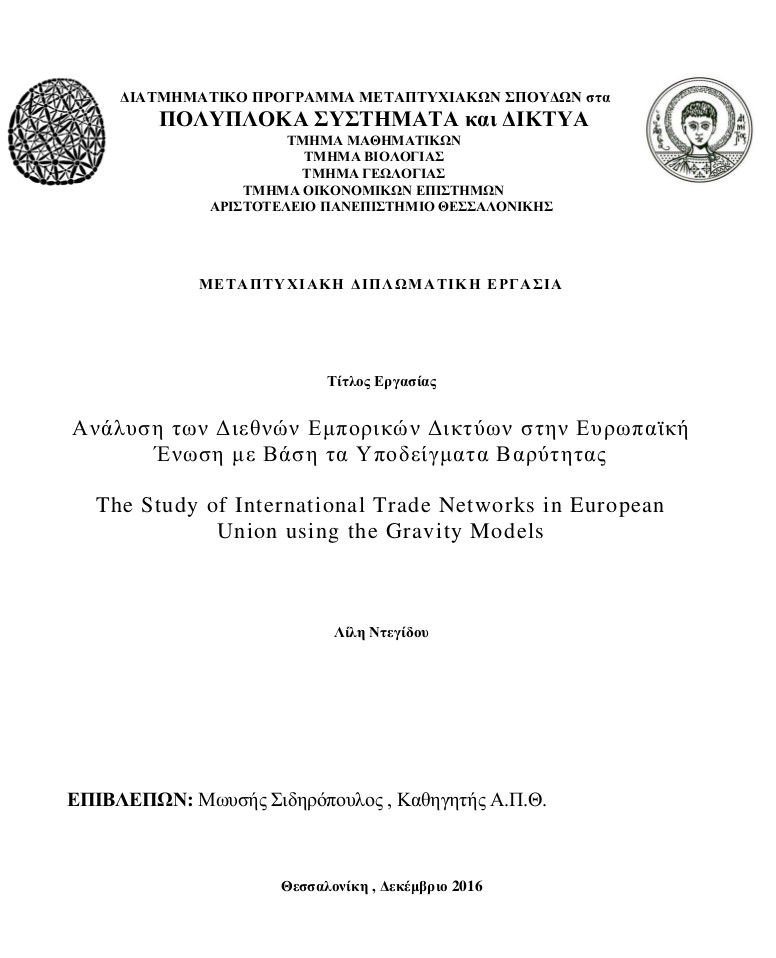
Ανάλυση των διεθνών εμπορικών δικτύν στην Ευρωπαϊκή Ένωση με βάση τα υποδείγματα βαρύτητας
Περίληψη
The gravity model can be used in the analysis of relations between two countries in international trade, the key variable is the GDP of the two countries in the bilateral trade. The basic test has to do with the location, namely the distance between countries, whether there is a lot or a few exports from one country to another, depends on this. The distance affects the cost, and therefore how much a country can export and in which countries. Our goal is through the empirical analysis, using econometric tools is to show the gravity model applied in bilateral trade relationship, that transaction costs increase from the distance. The study analysis is applied in the sample of 28 EU countries. Apart from the distance, considered the major cost in this model, we created dummy variables to see how other data can affect trade relations. Such dummy variables are: economic crisis, low and high income of countries and finally the countries that were at the beginning of the establishment of the European Union. Finally, apart from the empirical study we applied the network analysis model. Through the analysis of networks we display the bilateral trade relations in a network and the study of their centrality. This analysis shows the countries that have a shorter distance, also the countries that do most of the exports before and after the crisis. Our last comment relates to finding the countries located on the highest position in international trade, the countries that export more in some countries, and how that was impacted after the economic crisis.
Πλήρες Κείμενο:
PDFΕισερχόμενη Αναφορά
- Δεν υπάρχουν προς το παρόν εισερχόμενες αναφορές.
